MySQL SUM()
The SUM() aggregate function returns the sum of an expression.
If the return set has no rows, the SUM() function returns NULL.
Consider the following result set:
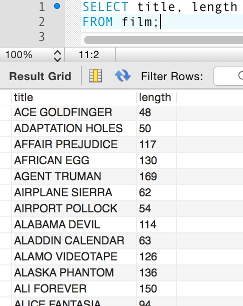
You can see that the film table contains a column for storing the length (in minutes) of each film.
We could use the SUM() function to return the total length of all films combined.
Result:
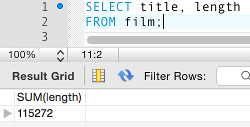
You could even divide that number by 60 to give you the number of hours (we also round it with ROUND()):
Result:
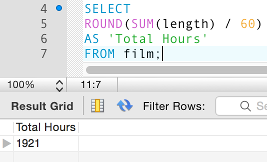
Maybe the movie rental provider could use this info to boast that they have "Over 1920 hours worth of movies!".
Another Example
Consider the following result set:
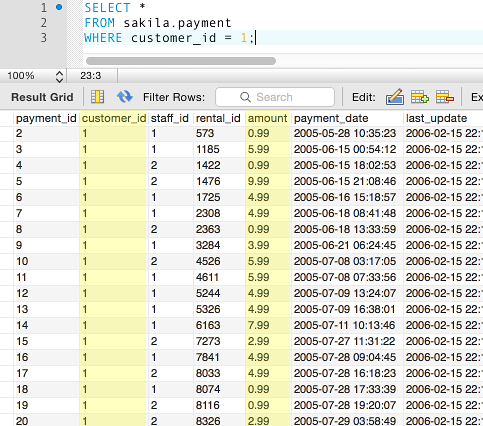
The above table stores customers' payment data. Each time a customer makes a payment, a new record is added to this table with the payment details.
In particular, look at the customer_id and the payment columns. You can see that there are many records containing the same customer_id, each with a corresponding amount.
What if you wanted to add up the total of all entries in the amount column?
We could construct the following query:
Result:
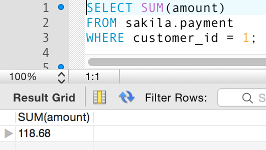
This tells us that customer 1 has spent a total of $118.68.
All Customers
We could extend the previous example to display all customers who've made a payment. We could display one record for each user, along with the total amount that they've paid in movie rentals. Like this:
Result:
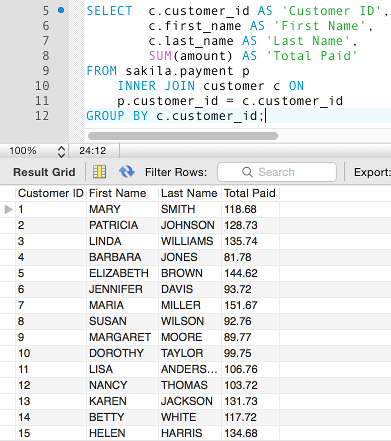
In the above example, we use an INNER JOIN to return data from two tables (so that we can display their names along with their totals). We also provide a column heading using the AS clause. We use GROUP BY so that we can list one record for each customer, combined with their total paid. And of course, the SUM() function is used to provide each total.
Add HAVING and ORDER BY
We could extend the above example even further by adding the HAVING and ORDER BY clauses.
Example:
Result:
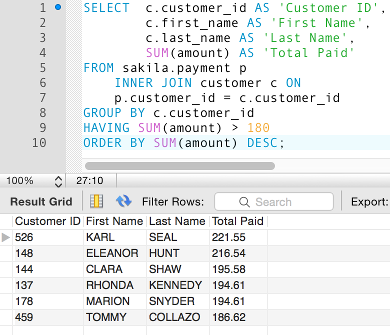
In the above example, we return only those records with where the total amount exceeds 180, then order it by the amount in descending order (so that the customer who's spent the most is listed at the top).
The examples on this page use the Sakila sample database.